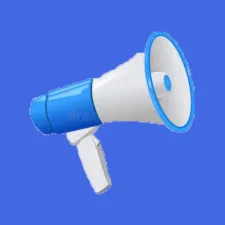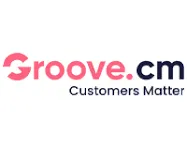WordPress Pages vs Posts: Understanding the Key Differences
WordPress Pages vs Posts: Why Most Users Get It Wrong (And How to Get It Right)
If you’re new to building a website, you’ve probably asked yourself about WordPress Pages vs Posts. This isn’t just a technical detail—it’s a core decision that shapes your site’s structure, SEO, and long-term success. Yet, most WordPress users miss out on the platform’s real power because they misunderstand the difference between pages and posts. Let’s clear up the confusion and help you build a stronger foundation.
Common Misconceptions About Pages and Posts
First, let’s tackle the myths. Many beginners believe that pages and posts are interchangeable in WordPress. However, that’s far from the truth. Some think posts are for “blogs” while pages are for “everything else,” but that oversimplifies the real power behind each feature.
One common misconception is that you should use pages for any important content. For example, you might think your “About” or “Contact” details should be posts because you want them to be visible. In reality, those are classic examples of when to use a page.
More importantly, posts are organized by date and category, making them perfect for regularly updated content like articles or news. Pages, on the other hand, are static and timeless. This distinction is crucial, yet it’s often overlooked.
Another myth? Some users worry that too many pages or posts will “slow down” their site or hurt SEO. In fact, it’s not the quantity but the purpose and structure that matter. Understanding WordPress Pages vs Posts from the start prevents confusion as your site grows.
How Each Impacts SEO Differently
Now, let’s talk about SEO—a hot topic for every site owner. The way you use WordPress Pages vs Posts can directly affect your search rankings.
Posts are made for fresh, ongoing content. They’re ideal for blog updates, tips, or news. Because posts are dated and categorized, search engines recognize them as dynamic. This structure encourages frequent indexing, which is great for ranking new content.
Pages, by contrast, are best for evergreen material—think of your homepage, services, or about section. These pages help define your site’s core structure. They don’t appear in blog feeds or archives, but they can become “cornerstone content” that search engines trust over time.
A big mistake? Publishing everything as a page or everything as a post. If you use posts for static information, it can get buried and hard to find—hurting both visitors and SEO. Likewise, making every update a page creates a confusing navigation structure.
Here’s the key: Use posts for content you’ll update or add to regularly, and pages for information that’s foundational or permanent. Search engines reward sites that are logical and easy to navigate.
When to Use a Page vs. a Post
Choosing between WordPress Pages vs Posts is easier when you know the purpose of each. Let’s break it down:
- Use a page when:
- You’re creating content that doesn’t change often (like “About Us,” “Contact,” or “Services”).
- You need a top-level navigation link.
- The information is timeless and not part of a regular update cycle.
- Use a post when:
- You’re sharing news, updates, stories, or any content that fits in a timeline.
- You want content organized by categories or tags.
- The entry should appear in your blog feed or RSS.
A helpful tip: If you ask, “Will I update this regularly, or is it foundational to my site?” you’ll almost always choose correctly. Don’t worry if you make an occasional mistake—WordPress lets you convert content or adjust your structure as you learn.
Real-World Examples of Mistakes and Wins
To make this crystal clear, let’s look at some real-world examples.
Mistake: Using Posts for Essential Pages
Sarah, a new business owner, added her “About” and “Contact” information as posts. Months later, these posts were buried under dozens of blog updates. Visitors had trouble finding them, and her website looked disorganized. This is a classic case of misunderstanding WordPress Pages vs Posts.
Win: Building with the Right Structure
Meanwhile, Tom launched his blog with helpful tutorials as posts and key site sections as pages. His “Start Here” page always appears in the top menu, while his latest articles are easy to find in the blog feed. Google loves his clear structure, and visitors stick around longer.
Mistake: All Pages, No Posts
Another common error? Making every new update a page. This happened to a fitness coach who wanted to share weekly tips. Instead of posts, she created dozens of pages. The result? Her site navigation became cluttered, and her SEO suffered since search engines couldn’t recognize a content hierarchy.
Win: Combining Both for Maximum Impact
The best sites blend both: clear, timeless pages for important info, and posts for updates and engagement. This balanced approach makes websites easier to navigate, strengthens SEO, and helps you grow your audience with confidence.
Don’t Miss Out on WordPress’s True Power
Understanding WordPress Pages vs Posts is one of the best ways to avoid costly mistakes and set your site up for long-term success. By using each tool for its true purpose, you’ll create a site that’s easy to navigate, loved by search engines, and ready to grow.
If you remember just one thing, let it be this: Most WordPress users are missing out on the platform’s real power because they misunderstand the difference between pages and posts. Don’t let confusion hold you back—make every section of your website count.
Ready to build a WordPress site that stands out? Start by organizing your content the smart way. Choose pages for the core, posts for your updates, and watch your site—and your audience—grow.
Frequently Asked Questions About WordPress Pages vs Posts
What happens if I use posts instead of pages for important site content?
If you use posts for core information like your About or Contact details, that content can quickly get buried under new blog entries. Visitors may have trouble finding it, and your site’s navigation could become confusing. More importantly, search engines may not recognize these posts as cornerstone content, which can hurt your SEO in the long run. Always use pages for information meant to stay visible and accessible at all times.
Can I convert a post to a page (or vice versa) in WordPress?
Yes! WordPress offers plugins like “Post Type Switcher” that allow you to easily convert posts into pages and vice versa. This is helpful if you realize you’ve used the wrong type. However, always check your site’s links and navigation after making changes to ensure everything still works smoothly.
How do WordPress Pages vs Posts affect my site’s menus?
Pages are best for building your main menu or navigation structure, since they’re static and always available. Posts, on the other hand, are organized by date or category and typically appear in blog feeds, not the main menu. Linking to posts from your main navigation works for featured articles, but for most foundational content, stick with pages.
Should I use posts or pages for landing pages and sales funnels?
If you’re building a landing page or sales funnel, use a page. Pages are ideal for content that shouldn’t appear in your blog feed and needs a custom layout or design. Many WordPress themes and builders offer special templates just for pages, giving you more flexibility and control.
Why is the difference between WordPress Pages vs Posts important for SEO?
Search engines look at your site’s structure to determine what’s most important. Pages signal content that’s evergreen and central, while posts indicate fresh, timely updates. Mixing them up can confuse search engines and visitors, making it harder to rank well or guide people to the right information.




